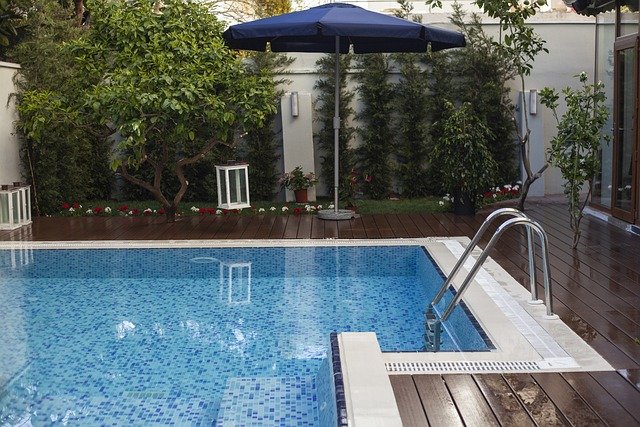Small Pools: Types, Installation, and Budget Planning
Small pools are becoming increasingly popular among homeowners looking to enjoy the benefits of a swimming pool without the space requirements or hefty price tag of a full-sized pool. This article will explore the different types of small pools available, provide insights on easy installation processes, and help you plan your budget for a small swimming pool project.

What are the different types of small pools available?
When considering a small pool for your property, you’ll find several options to choose from:
-
Above-ground pools: These are cost-effective and easy to install. They come in various sizes and shapes, making them suitable for different yard layouts.
-
Plunge pools: Typically measuring 2-4 meters in length, plunge pools are ideal for small spaces and offer a refreshing dip without the need for extensive swimming.
-
Lap pools: Narrow and long, lap pools are perfect for fitness enthusiasts who want to swim laps in a compact space.
-
Cocktail pools: Also known as “spools,” these pools combine elements of a spa and a small pool, often featuring built-in seating and jets.
-
Stock tank pools: A budget-friendly option, stock tank pools are made from large metal or plastic containers originally designed for livestock.
How does easy installation work for small pools?
Easy installation is one of the key advantages of small pools. Here’s what you need to know:
-
Site preparation: Ensure the chosen area is level and free from obstacles like tree roots or underground utilities.
-
Foundation: For above-ground pools, a solid, level surface is crucial. This can be achieved with sand, concrete, or a pre-fabricated base.
-
Assembly: Many small pools come in kit form with detailed instructions. Some may require professional assistance, while others can be DIY projects.
-
Plumbing and electrical: Connect the pool to filtration systems and power sources. This step may require professional help to ensure safety and compliance with local regulations.
-
Filling and chemical balance: Once installed, fill the pool with water and add the necessary chemicals to maintain proper pH levels.
What unique features do small pools offer?
Small pools can be surprisingly versatile and feature-rich:
-
Integrated heating systems for year-round use
-
Built-in seating or lounging areas
-
LED lighting for ambiance and nighttime swimming
-
Water features like fountains or waterfalls
-
Smart technology for remote control of pool functions
These features can transform a small pool into a luxurious backyard oasis, maximizing enjoyment in a compact space.
How much space is typically required for a small pool?
The space requirements for small pools vary depending on the type:
-
Plunge pools: Usually 2-4 meters in length and 2-3 meters in width
-
Lap pools: Typically 10-15 meters long and 2-3 meters wide
-
Cocktail pools: Often around 3-4 meters in diameter or square
-
Above-ground pools: Can range from 2-7 meters in diameter
-
Stock tank pools: Generally 2-3 meters in diameter
Remember to account for additional space around the pool for decking, seating, and safety features.
What is the typical budget range for a small swimming pool?
The cost of a small swimming pool can vary widely depending on the type, materials, and features. Here’s a general pricing guide:
| Pool Type | Estimated Cost Range |
|---|---|
| Above-ground pool | $1,500 - $15,000 |
| Plunge pool | $10,000 - $50,000 |
| Lap pool | $20,000 - $70,000 |
| Cocktail pool | $15,000 - $35,000 |
| Stock tank pool | $500 - $5,000 |
Prices, rates, or cost estimates mentioned in this article are based on the latest available information but may change over time. Independent research is advised before making financial decisions.
Factors that can influence the cost include:
-
Materials (fiberglass, concrete, vinyl)
-
Installation method (DIY vs. professional)
-
Additional features (heating, lighting, water features)
-
Landscaping and decking
-
Ongoing maintenance costs
How can you save money when planning a small pool project?
To keep your small pool project within budget, consider these cost-saving strategies:
-
Choose a simpler design with fewer complex features
-
Opt for a DIY installation if you have the skills and time
-
Compare quotes from multiple contractors
-
Consider alternative materials like vinyl or fiberglass instead of concrete
-
Plan the project during the off-season when demand is lower
-
Explore financing options or phased installation to spread out costs
-
Invest in a pool cover to reduce maintenance and heating costs
By carefully planning your small pool project and considering these factors, you can create an enjoyable aquatic retreat that fits both your space and budget constraints.




